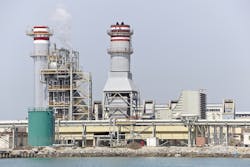The global desalination capacity will double by 2020, according to a new analysis by Frost & Sullivan.
The report comes just a few days after MEED Projects predicted a 40 percent increase in desalination capacity in the Gulf Cooperation Council (GCC) countries by 2020.
Frost & Sullivan said that rapid industrialization and urbanization have increased water scarcity in many parts of the world. As drought conditions intensify, desalination is expected to evolve into a long-term solution rather than a temporary fix.
Technology providers can capitalize on this immense potential by developing cost-effective and sustainable solutions, the consulting firm said.
The report states that the global desalination market earned revenues of $11.66 billion in 2015, and this figure is estimated to reach $19.08 billion in 2019. More than 17,000 desalination plants are currently in operation in 150 countries worldwide, a capacity that is predicted to double by the end of the decade.
“Environmentally conscious countries in Europe and the Americas are hesitant to practice desalination owing to its harsh effects on sea water,” noted Vandhana Ravi, independent consultant for Frost & Sullivan’s Environment and Building Technologies unit. “Eco-friendly desalination systems that do not use chemicals will be well-received among municipalities in these regions.”
The report highlights several factors that are holding back adoption in some parts of the world, including lack of regulatory support and the high cost of desalination. The thermal desalination process also releases significant volumes of highly salty liquid brine back into water bodies, impacting the environment. Brine disposal will remain a key challenge until a technology upgrade resolves the issue.
“Carbon nanotubes, radial deionization and biomimetic aquaporin membranes are some of the new approaches that will push desalination to become an indispensable element in water management,” Ravi said. “Innovations such as ceramic and polymeric membranes targeted at reducing operating costs will pave the way for the acceptance of desalination as a practical solution to tackle the shortfall in fresh water.”
